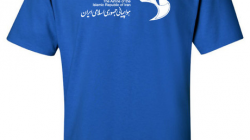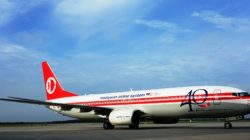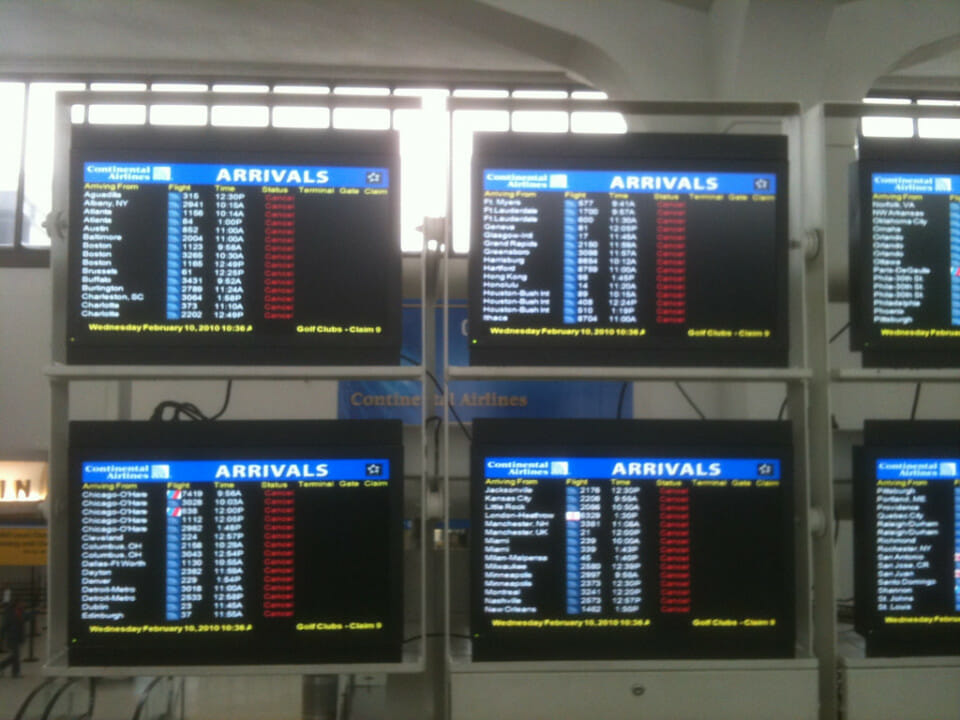Having grown up in the cities of Dallas and Fort Worth, I had not just one airline to fly to get to anywhere I needed to go. In fact, I had three solid choices: American, Southwest, and for a long period of time, Delta Air Lines.
The Story of “Easy Street”
Once upon a time, and for a very long period of time, Delta Air Lines operated a hub at DFW airport. Terminal “E” at DFW, as it is known today, was dubbed, “Easy Street” by Delta back in the 90’s to market the ease of connecting at DFW on Delta. Unlike American Airlines, which stretched its operations across three terminals at DFW airport in the 1990’s, Delta’s gates at its DFW hub were housed in one terminal, then called “Terminal 4E.” In addition to the semi-circular sickle-cell building, “Easy Street” also had a satellite terminal to accommodate a “bank structure” for Delta with East/West and North/South flows, as well as a dedicated Customs and Immigration facility within the terminal. Delta operated a handful of international routes such as Frankfurt (a route authority acquired from Pan Am), Mexico City, Acapulco, and Puebla, and its longstanding partners AeroMexico operated its flights from DFW to Mexico City, Ixtapa, and Cancun and Air France to Paris CDG from E.
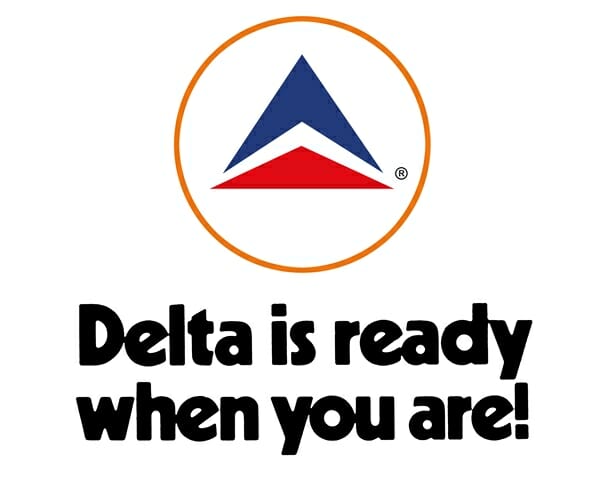
Delta contended heavily against American at DFW throughout the years, flying to long, medium, and short range markets on a mix of widebody tri-star aircraft such as the Lockheed L-10/11 all the way down to turboprops on regional third-party carriers like Comair.
I loved flying Delta out of DFW because it represented a choice that I could make, between it and another major airline, to get to Washington, D.C., Honolulu, Mobile, Orange County, Frankfurt, Orlando, Fort Walton Beach, Tampa, or Mexico City. These are all routes that my family and I flew on Delta during the 1990’s and early 2000’s.
Delta has a fascinating company history and culture. It has always taken great pride in its brand, which has been a hallmark of its slogans throughout the year. Noticeably, DFW airport was founded in 1974, which is when Delta started to get really bold and punchy with their lines.
1974: Delta Is My Airline
1980: Airlines Are the Same. Only People Make the Difference.
1984: Delta Is Ready When You Are
1984: Delta Gets You There
1987: We Love to Fly and It Shows
1992: Ready When You Are
1994: You’ll Love the Way We Fly
1997: On Top of the World
2005: Good Goes Around
It was rumored that the Delta hub at DFW was not very profitable even during the relatively tranquil, “roaring 90’s” period as it was no match against American in size nor scale. Furthermore, Delta tinkered with the hub by down-gauging most of its DFW operations into a regional model as a means of, “shrinking” ASMs to drive up yield and capture some slice of the local market. Unfortunately, that decision was ill-timed as the costs of regional and turboprop aircraft were very high, and fuel prices skyrocketed in the early 2000’s.
The hub survived September 11th, 2001 largely because Delta weathered through the immediate post-9/11 era in a better position relative to other struggling U.S. airlines. However, Delta’s financial position deteriorated around 2004 and the carrier struggled to avoid filing for Chapter 11. In an effort to evade bankruptcy in the fall of 2004, Delta announced that it would close the DFW hub in January 2005, reducing schedules down to 21 daily flights to just three markets, and eliminate over 3,600 jobs.
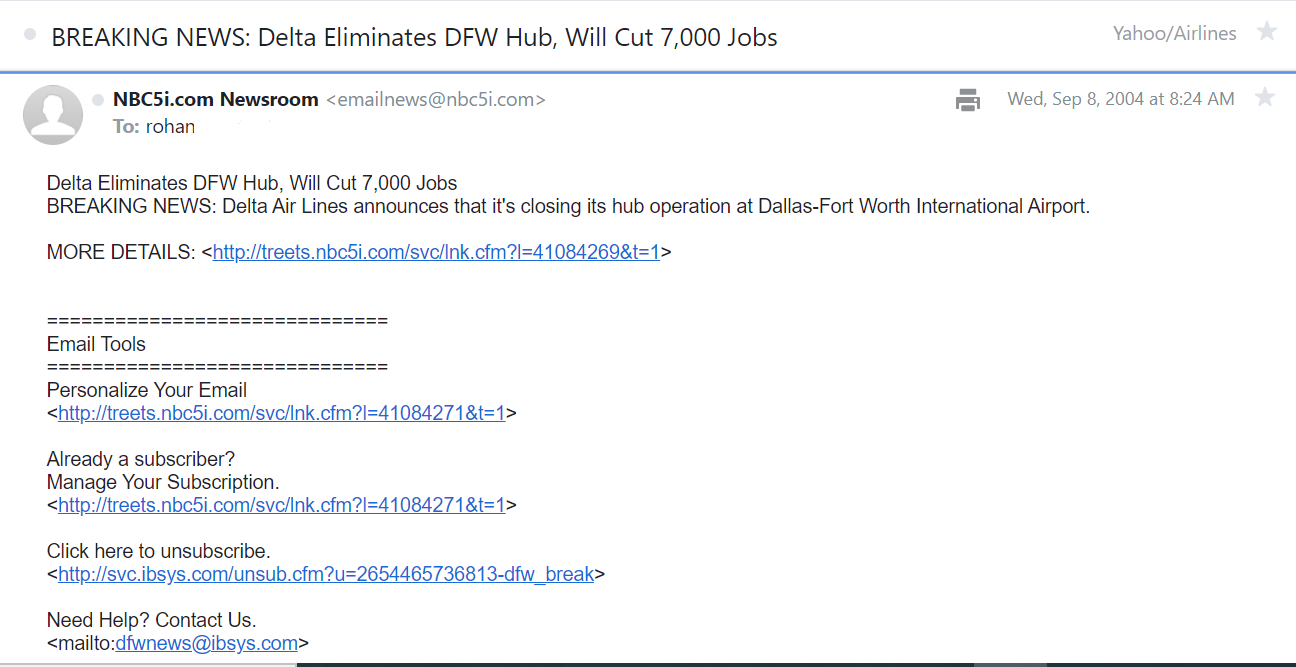
From Bellini’s to Bottled Water
Let’s fast-forward fifteen years: how crazy is it that the Delta Air Lines that entered into the year 2020 was fundamentally different than the Delta that was on its back in 2004. It eventually filed for bankruptcy the following year, in September 2005, restructured, merged with Northwest Airlines, and has grown to become one of the world’s most successful and profitable airlines of the era.
When 2020 started, Delta passengers in economy class could expect a welcome cocktail (Bellini’s), bistro-style dying on “elevated service-ware” and on-demand snacks when flying long-haul.
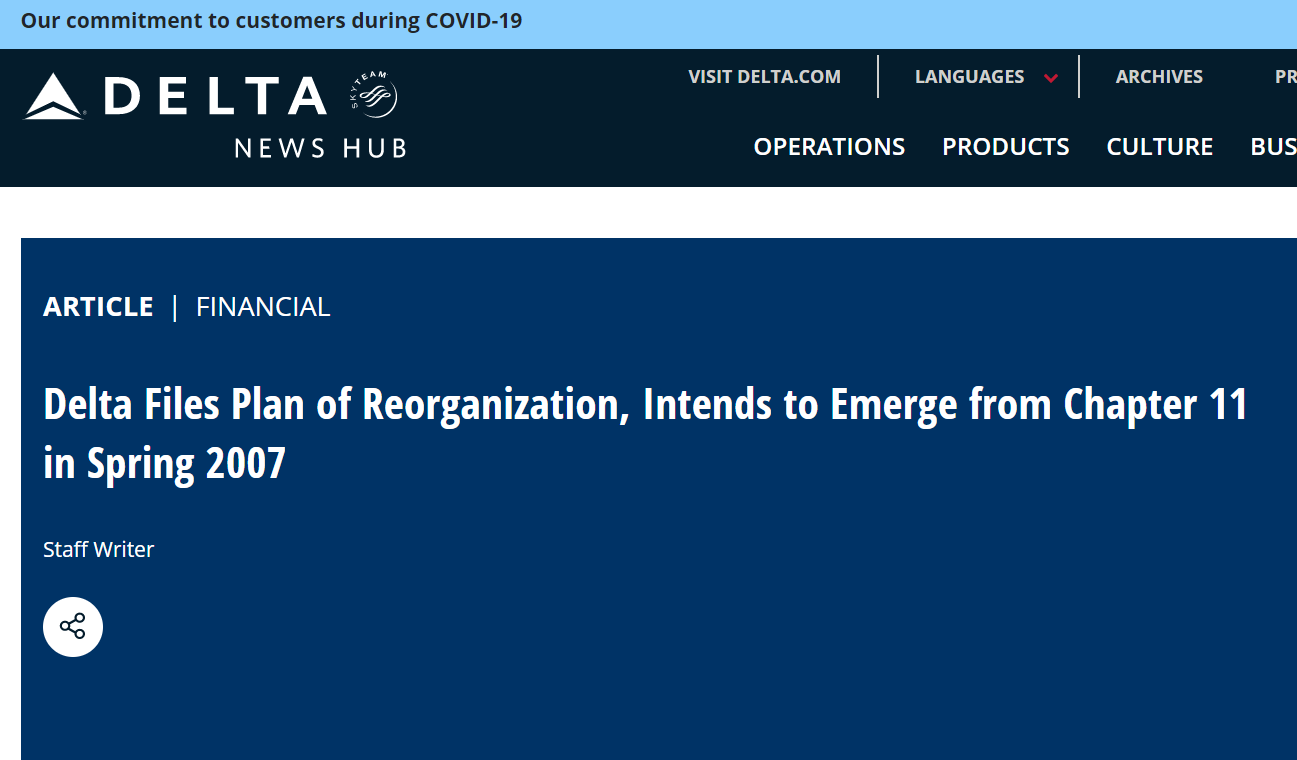
Now, barely closing out the end of Q1, Delta passengers in the back can only expect to receive an individual 8.5 oz bottle of water and a choice of a snack, even on long international routes. It doesn’t get much better in First Class/Delta One: they simply get a complimentary Flight Fuel box, normally featured as buy-on-board food for sale in “normal” times. No ice. No cups. No alcohol.
Keep Climbing? Absolutely
The stark contrast between the state of the carrier ending Q4 2019, and a mere few months later exiting Q1 2020, paints a very real and harrowing portrait of the cyclical nature of the airline industry but with even a scarier undertone: the worst may not even be over. For whatever excitement was generated when Delta announced that it was creating “focus cities” in places like Nashville, Austin, Raleigh/Durham and San Jose, it should all be relegated to a mere memory.
Delta CFO Paul Jacobson made a statement on Friday, March 21 saying that it planned to, “emerge as a smaller carrier,” from the coronavirus crisis.
My mind jumped back to August 2004 when I saw the e-mail, “Delta eliminates D/FW hub, to cut thousands of jobs. I was a junior in high school at the time. It felt like a huge deal (and a blow) back then.
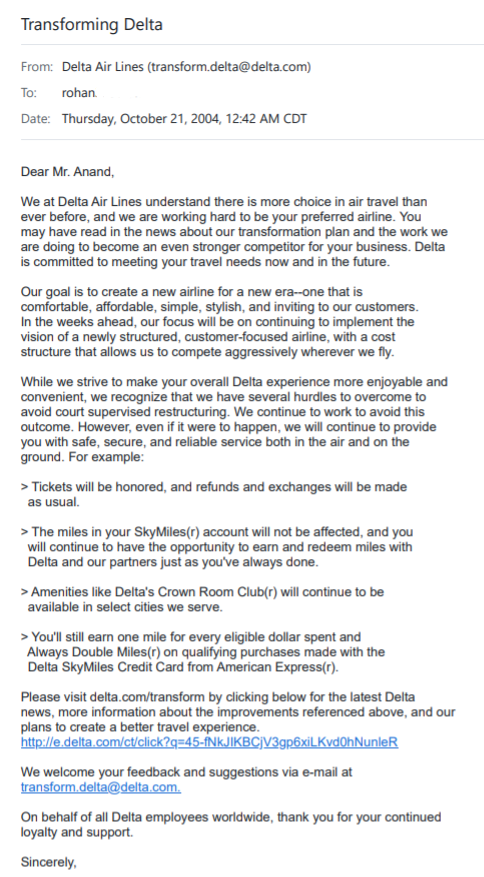
Somehow, the news of Delta parking 50 Percent of its aircraft on March 21 felt much, much worse. A reversal of fortunes at a time during which something completely unprecedented in the airline industry has taken place. Fundamentally, structurally, nothing is soundproof and who knows where the bottom is.
The aviation stratosphere has gone dark in recent weeks. Widebody jets are being parked and/or fast-tracked to retirement. Delta is by far not the only one hurting. But, the precedent that Delta has set for itself, after making such a comeback in the last fifteen years, only underscores the importance of the example it must set as the airline industry gradually stabilizes and starts to begin the long road to recovery in the elusive post-COVID-19 realm that lies ahead.
Delta is Ready When You Are? Always.
In the meantime, if you haven’t had a chance yet, I highly recommend reading, “Glory Lost and Found: How Delta Climbed from Despair to Dominance in the Post-9/11 Era” written by talented industry authors Seth Kaplan and Jay Shabat. The messaging around strategic planning, visionary leadership, resilience and just a little bit of luck went a long way for Delta, after enduring long, difficult years from its mid-2000’s low point to being what it was (is?) at the turn of this decade.
In fact, I recommend this and other prominent aviation-and-airline-oriented literature that do a fine job of walking readers through how airlines survived macro-economic disruption. I am currently re-reading, “Twelve Years of Turbulence: The Inside Story of American Airlines’ Battle for Survival,” which I did a book review on in 2018.
BOOK REVIEW: TWELVE YEARS OF TURBULENCE — WRITTEN BY GARY KENNEDY, TERRY MAXON, Reviewed by Rohan Anand, April 2018
On Top of the World? Hopefully soon.

I’ll close with this image of Delta’s logo in 1929. The same year as the Wall Street Crash, the beginning of the Great Depression, the year that there happened to be a worldwide Influenza outbreak that killed 200,000 people (a far larger statistic relative to the world’s population at the time than it would be today), among other things.
It was also the same year that Germany’s Graf Zeppelin completed the first round-the-world flight and when Charles Lindbergh completed the 3,500 mile journey from Detroit to Cape Horn.
As for not just Delta, but also all those affected by COVID-19 around the world. This too, shall pass.


